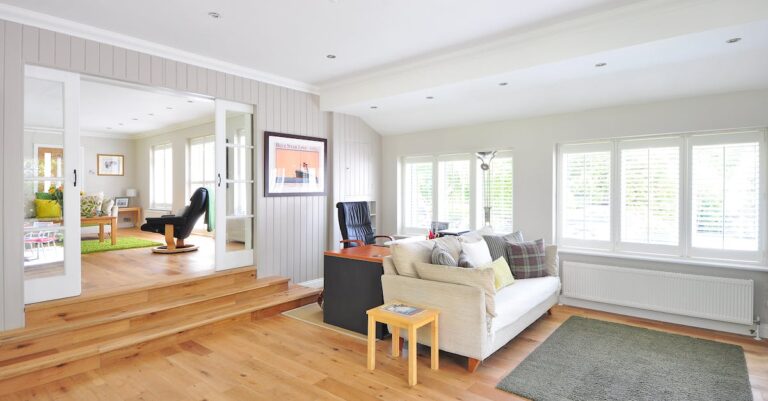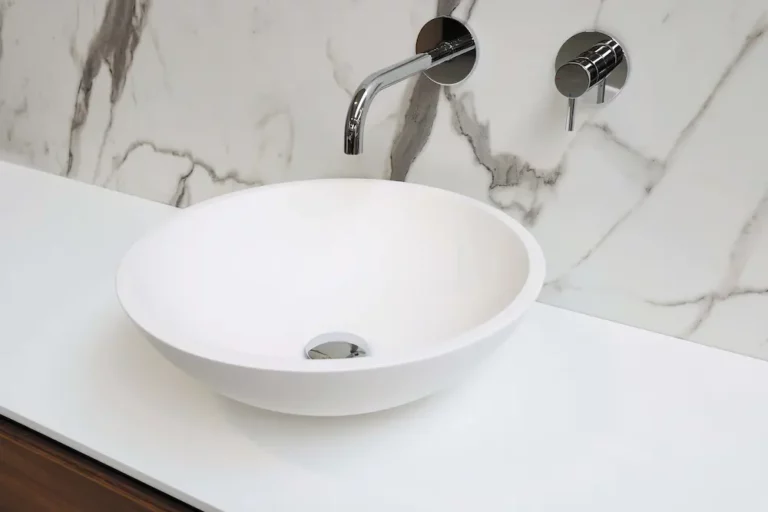Ultimate Guide: Styling Coffee Table Books for a Chic Look
Styling coffee table books can seem like a daunting task at first. You’re staring at your collection, wondering how to make them look more than just a pile of books on a table. I’ve been there, and I’m here to share some simple yet effective ways to elevate your coffee table’s look with just a few books.
Whether it’s your living room centerpiece or a side table needing a touch of personality, styling books is an art that adds character to any space. I’ll guide you through making your coffee table books not only a conversation starter but also an expression of your style. Let’s dive in and turn those stacks into statement pieces.
Elevate Your Decor with Coffee Table Books
Growing up, I always found it fascinating how certain objects in a home could change the atmosphere entirely. Among these, coffee table books held a special place in my heart. They weren’t just books; they were pieces of art that could transform a room’s vibe, something I cherish to this day.
To kick things off, let’s dive into the art of selecting books to fit seasonal themes. I’ve discovered that aligning your book choices with the season can remarkably rejuvenate your space. In spring, I gravitate towards volumes bursting with floral designs, botanical photography, and vibrant art to echo the rebirth outside my windows. Summer calls for something different: books that shimmer with coastal vibes, radiating sunlight and salt air through their pages.
Autumn presents a unique charm, encouraging me to display books that carry the warmth of rich, earthy tones and perhaps tales of cozy, enchanting places. As the leaves change, so does the ambiance on my coffee table. Come winter, I find myself selecting books that are akin to wrapping oneself in a soft blanket—the ones that speak in soft colors and intimate, warm dialogues of fireside tales and snowy landscapes.
But it’s not just about the visuals. It’s about creating a sensory experience. Imagine sitting down on a chilly winter evening, a glass of wine in hand, surrounded by books that visually cue the warmth and coziness of the season. That’s what I aim for – to make my living space not just look, but feel in tune with the time of year.
Transitioning your coffee table books with the seasons isn’t merely a decorative change; it’s a ritual that celebrates the passage of time in the most beautiful, palpable way. I’ve found it’s a delightful method to refresh my decor without undertaking a massive redecoration project. Plus, it keeps me looking forward to discovering new books and reliving the memories encapsulated in my favorite ones. It’s an ever-evolving, never-ending process of beautification and rediscovery, one season at a time.
Creative Grouping on Tables
When it comes to styling coffee table books, there’s nothing more delightful than figuring out creative ways to group them together. Books are not just for reading; they’re powerful decor items that, when styled correctly, transform the feel and look of your living space. I’ve experimented with various methods over the years, and there are a couple of approaches that stand out. Let’s dive into my favorite techniques for arranging these beautiful books.
Arranging Books in Stacks for Visual Impact
Stacking books is a classic move, but it’s all about how you stack them that can make a significant difference. I’ve found that mixing and matching book sizes within a stack helps create an eye-catching display. Here’s my go-to method: I start with the largest book at the base and then gradually place smaller ones on top. This method not only maximizes space but also draws attention to the most visually appealing book covers.
But it’s not just about size. Color coordination plays a critical role, too. I often arrange books in a way that their spines create a color gradient or complement the room’s color scheme. This approach brings a subtle yet striking visual harmony to the space. Remember, the goal is to captivate and intrigue, encouraging guests (and yourself) to pick up a book and flip through its pages.
Using Books to Create Focal Points on Tables
Books can do more than just stack; they can be centerpieces that anchor the entire room’s decor. I’ve used oversized, artfully illustrated coffee table books as a standalone focal point on many occasions. Placing a bold, beautiful book in the center of a table can command attention and spark conversations. But I don’t stop there.
To add depth and interest, I sometimes use smaller books or decorative items to complement the main book. By placing a few smaller books at angles around the central book or even opening one to an artistically rich page, I’ve been able to transform ordinary coffee tables into dynamic displays.
Incorporating seasonal elements or personal artifacts alongside the books can also enhance the table’s visual appeal. Whether it’s a small vase of fresh flowers in spring or a whimsical sculpture that speaks to your personality, these additions create a layered, lived-in look that feels both curated and inviting.
Color Coordination Strategies
Color coordination is a cornerstone of interior design, and it extends to the way we style our coffee table books. When done correctly, it ties the room together, creating a unified, visually pleasing environment. Let’s dive into some effective strategies.
Matching Book Jackets with Room Decor
The first step in achieving harmony in your living space is matching the colors of your book jackets with your room’s decor. It’s a simple yet incredibly effective method for ensuring that everything feels cohesive. For example, if your living room features a lot of blues and whites, selecting books with spines or covers in similar shades can enhance the aesthetic appeal.
When I’m styling my coffee table, I often find myself swapping out book jackets or even removing them entirely to reveal the actual cover, which might be more in line with my room’s color scheme. Sometimes, the most striking effect is achieved by creating a subtle blend rather than an exact match.
Alternative Display Options for Cohesive Looks
Beyond just matching colors, there are creative ways to display your books for a cohesive look. One approach is to experiment with an ombré effect, arranging your books so their spines create a gradual color transition. This method adds depth and visual interest to your table or shelves.
Another fun option is to use books of a specific color to form a monochromatic cluster. This can act as a bold statement piece, especially if you choose a vibrant color that pops against the rest of the room’s palette.
For those who prefer a more eclectic look, mixing and matching different hues while keeping a unifying element, like size or theme, can offer the best of both worlds. This strategy works well in rooms that already feature a variety of colors and are in need of a unifying element to bring everything together.
Integrating Decorative Items with Books
When I’m styling my coffee table, I love to think about how books can be more than just reading material. They’re a part of the decor, and when combined with the right decorative items, they can elevate the look of any room. Let’s dive into how to select complementary decorative objects and achieve a harmonious color scheme and texture mix that can make your coffee table truly stunning.
Selecting Complementary Decorative Objects
When I’m picking out decorative objects to pair with my coffee table books, I always keep in mind the theme of the book itself. For instance, a book about the ocean can be beautifully complemented by a piece of coral or a nautically-themed candle. Here are a few tips I’ve found useful:
- Scale and Proportion: Make sure the objects don’t overpower the books. A small, delicate sculpture might look lovely atop a large coffee table book, creating an interesting visual balance.
- Functionality: I often choose items that aren’t just pretty but are also functional. A sleek, modern magnifying glass or an elegant bookmark can add both style and usefulness.
- Personal Touch: Adding items that mean something personal, like a souvenir from a trip or a handmade bowl, gives the space character and tells a story.
Achieving a Harmonious Color Scheme and Texture Mix
The colors and textures on my coffee table need to flow seamlessly with the rest of the room. Here’s how I accomplish that:
- Color Coordination: I’ll usually pick two or three dominant colors from my room’s palette and select books and decorative items that match or complement those hues. This creates a cohesive look that ties the whole room together.
- Mixing Textures: Combining different textures adds depth and interest. A glossy ceramic vase next to a matte-finished book or a soft, velvety throw draped over the edge of the table can make the setup more engaging.
- Layering: Sometimes, I like to layer objects of varying heights and sizes. A tall candlestick might stand next to a short stack of books, with a small, textured stone or shell placed on top. This layering technique creates a dynamic look that draws the eye.
By thoughtfully selecting decorative objects that complement my books and adhering to a cohesive color scheme and texture mix, I’ve found that it’s possible to create a coffee table display that’s both visually interesting and deeply personal. It’s not just about making a space look good; it’s about crafting an environment that feels welcoming and tells a story. And isn’t that what great interior design is all about?
Establishing Themes with Coffee Table Books
When I’m planning to refresh the look of my living room, or any space for that matter, I often start by conceptualizing themes around which I can style my coffee table books. This approach not only adds a layer of depth and interest to the room but also helps in creating a cohesive look that speaks volumes about personal taste and lifestyle. Let’s dive into how to effectively conceptualize themes and then select books and accessories that bring these themes to life.
Conceptualizing Themes for Cohesive Styling
The first step in my process is brainstorming themes that resonate with my current interests, the season, or the general vibe I want to curate in my space. Themes can range from travel and adventure if I’m feeling wanderlust to art and design if I’m leaning towards a creative reinvention of my space. Sometimes, the themes are as simple as a color scheme that harmonizes with my room’s palette or as intricate as a time period that fascinates me, like the Roaring Twenties.
What’s important here is that the theme speaks to you personally since these books will be a focal point in your living area. They’re not just books; they’re conversation starters and windows into what fuels your passion. I always ensure the theme I settled on is something I’d be excited to share and talk about with my guests.
Selecting Books and Accessories to Reflect Chosen Themes
Once I’ve pinned down a theme, the next step is selecting coffee table books that align well with it. For instance, if I’ve chosen a botanical theme, I’ll look for books with stunning plant photography, botanic illustrations, or even gardening guides. This step is where you can really let your theme guide your choices, and don’t shy away from mixing genres if they still align within your thematic boundaries. It’s fascinating how a well-chosen mix can add layers and dimensions to your theme.
But the styling doesn’t stop at books. I love to pick accessories that complement my theme. For a travel theme, I might add a vintage globe or souvenirs from my travels on top of or beside my book stacks. For an art theme, a small sculpture or a palette and brushes can add an interesting touch. These accessories not only reinforce your theme but also personalize your space further.
Remember, the essence of using themes is to tell a story that’s uniquely yours. Whether you lean towards minimalism and select just a few key pieces or you’re a maximalist who loves layers of stories and textures, your theme is your narrative thread. Through thoughtful selection and pairing of coffee table books with meaningful accessories, you can transform your coffee table from a mere piece of furniture to a centerpiece that reflects your personality and interests.
Horizontal Stacking Techniques
When it comes to styling coffee table books, I’ve found that laying them flat in horizontal stacks not only looks sleek and modern but also allows for creative display options. Let’s dive into a couple of techniques that worked wonders for me.
Layering Books with Decorative Objects on Top
One of my favorite ways to utilize horizontal stacks is to layer them with decorative items. This approach turns your coffee table into a dynamic display that invites conversation and admiration. Here’s how I do it:
- Start with Larger Books at the Bottom: Begin your stack with the largest books you have. This creates a stable base and ensures the smaller books on top won’t overhang awkwardly.
- Vary the Stack Heights: Don’t feel like each stack needs to be the same height. Playing with different stack heights adds visual interest and keeps the eye moving.
- Decorative Objects as the Cherry on Top: Once I’ve got my stacks looking good, I love to add a personal touch to decorative objects. A small vase, a chic sculpture, or even a beautifully designed candle can elevate the entire setup. This layering not only showcases your books but also highlights your style.
Remember, the key is balance. You don’t want the decorative items to overwhelm the books but rather complement them.
Maximizing Space and Creating Interest with Horizontal Stacks
For those of us with smaller coffee tables or who simply want to maximize the available surface area, horizontal stacking is a game-changer. Here’s what I keep in mind:
- Space Efficiency: Horizontal stacks let you display more of your beautiful books without taking up too much room. It’s a practical solution that still packs a stylistic punch.
- Accessibility: One of the practical benefits of horizontal stacking is that books remain easily accessible. You want your guests to feel free to pick up and flip through your books. As such, I always ensure the spines are facing out, and the titles are readable at a glance.
- Mix and Match: I’ve found that mixing books of different sizes and colors within the same stack can create an unexpectedly cohesive look. It’s about finding a balance that works for your specific space and style. Sometimes, a pop of color in an otherwise monochrome stack can bring the whole look together.
By employing these techniques, I’ve been able to turn my coffee table books from mere reading material into integral parts of my home’s decor. Horizontal stacking isn’t just about organization; it’s about making a statement and infusing personality into your space. Whether you’re layering with decorative objects or maximizing your space with carefully curated stacks, the possibilities are endless.
Conclusion
Styling coffee table books isn’t just about piling them up on a table. It’s an art that combines aesthetics with personal flair to create visually appealing and functional spaces in our homes. By adopting horizontal stacking techniques and layering with decorative objects, I’ve shared how you can turn these books into more than just reading material. They become an integral part of your decor, reflecting your style and interests. Remember, the key is to start with the basics—larger books at the bottom—and then let your creativity flow. Add that personal touch with unique items that speak to you, and you’ll have a coffee table that not only looks great but also tells your story. Happy styling!






